Burning Rubber: Best Sportbike Tires

Street rubber that can handle a trackday or two
The job of a sportbike tire is a tough one. Considering the performance – and variety – of today’s modern sporting machines, an ideal tire needs to be able to warm up quickly, offer good grip in both wet and dry conditions, transfer feedback to the rider, and provide good handling capabilities. Thankfully, all the major tire companies work tirelessly to improve their tires to meet these demands. Of course, longevity is a concern as well, but compared to a sport-touring tire a sportbike tire won’t quite measure up with all the other duties it has to perform.
Here, we’ve gathered seven different tires that are great at handling it all. We’ve focused on street-based tires, since that’s where the majority of sportbike riders spend their time, although all of the tires here are more than capable of handling the occasional trackday or two. If you’re the serious trackday/racing type, we’ll have a separate guide for you coming soon.
Table of Contents
-
1. Editor's Pick: Pirelli Diablo Rosso IV: Shop Now
-
2. Avon 3D Ultra Evo: Shop Now
-
3. Bridgestone Battlax Hypersport S22: Shop Now
-
4. Continental ContiAttack SM 2: Shop Now
-
5. Dunlop Sportmax Q5: Shop Now
-
6. Metzeler Sportec M7 RR: Shop Now
-
7. Pirelli Diablo Supercorsa V4: Shop Now
-
8. Michelin Pilot Power 2CT: Shop Now
-
9. Metzeler Sportec M9 RR: Shop Now
-
10. Continental ContiSport Attack 4: Shop Now
-
11. Michelin Power 6: Shop Now
1. Editor's Pick: Pirelli Diablo Rosso IV
Since it wears the roman numeral IV on its sidewall, you’ve likely guessed that Pirelli has developed three previous versions of the Diablo Rosso tire. This latest iteration continues the family’s supersport-inspired performance delivered in a package entirely at home on the street or the occasional trackday.
Pirelli says each size of the Diablo Rosso IV has been “developed in a bespoke way according to the characteristics and needs of each machine,” factoring in the different weights and power outputs of each bike. What separates the IV from previous versions is Pirelli’s continual refinement of the tire’s profile, based on lessons learned as the spec tire provider of the World Superbike championship. A flexible and responsive carcass help transmit feedback to the rider while also helping the tire get up to temperature quickly. Full silica compounds also ensure fast warm-up times, and Pirelli’s Cap&Base structure on the rear tire help give it stability and grip while cornering and accelerating.
2. Avon 3D Ultra Evo
The Avon 3D Ultra Evo tires aren’t as widely known as other brands, but offer impressive performance. The 3D in its name refers to the sipes cut into the tire with three-dimensional points underneath that interlock and limit tread flex, thus allowing for quicker warm-up times and better stability. Avon’s variable belt technology places the steel cords close together in the center for stability and even wear, while the cords are further apart at the edges to give as big a footprint as possible while leaned over. And, of course, a bigger footprint means more grip.
Triple Extrusion tread compound features more durable compound in the center of the tire for longevity and a softer compound at the shoulders for – you guessed it – better grip. A third compound underneath the two binds them together and helps with cooling.
3. Bridgestone Battlax Hypersport S22
If the Bridgestone Battlax Hypersport S22 sounds familiar to you, maybe it’s because our own Evans Brasfield just finished sampling them at the Jerez circuit. The latest in B-Stone’s street-focused sportbike tire lineup, the S22 takes the popular S21 and makes it better through the use of new compounds, new tread patterns, and more. With two different compounds in front and three in the rear, the S22s are able to perform over a wider range of temperatures.
In the rear, Bridgestone engineers shrunk the size of the silica molecules, providing more silica for the same surface area. This means more contact with the road (though at a granular level). Bridgestone’s ULTIMAT EYE technology, a proprietary tire dyno that allows engineers to measure contact patch grip and slippage in a controllable/repeatable manner, the designers were able to test a wide variety of compounds and profiles. Through this testing, the slippage at the back edge of both front and rear contact patches was reduced. The payoff for this effort is increased cornering grip and lessened tire wear. Needless to say, check out the review link above for even more details about this very capable tire.
4. Continental Sport Attack 2
This one is for the little guys: The Continental ContiAttack SM 2 is a rare offering aimed specifically at supermoto and lightweight sportbike classes, which aren’t often served in the sport tire realm. Updated in 2024, the ContiAttack SM 2 builds on its predecessors by offering high grip levels, enhancing handling capabilities, and improving mileage — that’s a big one for riders on a budget. Designed with supermoto machines like the KTM 690 SMC R, Husqvarna 701 Supermoto, and GasGas SM 700 in mind, it also suits smaller sportbikes such as the Aprilia RS 457, Kawasaki Ninja 500 / Z500, Yamaha YZF-R3 / MT-03, etc. Updates from the previous generation include refined rubber compounds for better wet and dry performance, increased tread depth for extended mileage, and the addition of Continental’s GripLimitFeedback technology, which enhances rider feedback at extreme lean angles. The tire’s carcass has also been revised to improve flexibility, leading to a more controlled and comfortable ride.
On the road and track, the ContiAttack SM 2 delivers strong initial turn-in and maintains excellent stability through corners. Thanks to Continental’s BlackChili compound, the tire warms up quickly, offering immediate grip that exceeds its predecessor by a notable level. In wet conditions, the updated tread pattern enhances water dispersion, keeping the ride stable even on damp asphalt. Whether carving through tight city streets or pushing limits on a kart track, the ContiAttack SM 2 strikes a compelling balance between razor-sharp agility and real-world usability. It’s a solid choice for supermoto and lightweight sportbike riders who demand both performance and durability.
5. Dunlop Sportmax Q5
The Dunlop Sportmax Q5 introduces several design enhancements over its predecessor, the Sportmax Q4, aimed at elevating track performance. To be blunt, the Q4 didn’t impress us all that much, but the Q5 does. Notably, the Q5 features a revised profile with a 2mm increase in both height and width for the front tire, enhancing turn-in response and overall handling. The rear tire has also undergone significant development, incorporating a redesigned carcass that improves stability under hard acceleration and better distributes contact pressure for more even wear. Both tires use an updated compound formulation that increases mechanical grip and heat tolerance, ensuring consistent performance throughout a session. These refinements collectively contribute to a more responsive and confidence-inspiring ride.
In our testing, the Q5 impressed with its rapid warm-up times, delivering consistent grip from the outset without the need for tire warmers. In fact, Troy Siahaan used them in a race setting and he did it without tire warmers! The front’s grip stands out, providing exceptional stability and precise feedback during aggressive cornering. The rear tire, with its revised construction, felt more planted mid-corner than its predecessor and allowed for predictable slide control when pushed to the limit, while still delivering racetrack-ready grip levels. We’ve observed that the rear tire exhibited quicker wear rates under intense use, particularly on liter-class motorcycles — it’s visually alarming, but the tire is working. Mr. Siahaan took them down to the chords just to prove that point!
The Dunlop Sportmax Q5 offers a compelling blend of performance and convenience, making it an attractive option for track or high-performance street riders, that want high levels of grip without much hassle. Our recommendation: Buy the stickier Q5 front, while opting for a slightly stiffer Q5S rear, which utilizes a different carcass construction than the Q5 that helps alleviate some of that accelerated wear we mentioned.
6. Metzeler Sportec M7 RR
As one of the most dominant tire manufacturers at the Isle of Man TT, Metzeler knows a thing or two about making sportbike tires that perform well on the street, especially at racing speeds. With the Sportec M7 RR, you have a tire incorporating the lessons learned from the TT. Metzeler paid a lot of attention to making a tire that can perform in both wet and dry conditions, hence the amount of grooves (and their placement) compared to other tires here. Evans provides a more detailed explanation of the grooves, why they are placed where they are, and why they are important (among several more details) in his review of the M7 RR.
Performance in varying conditions is also dependent on compound, and the M7 RR uses a dual-compound rear with 100% silica on the edges for quick warmup (the front is 100% silica). A harder compound in the central portion of the rear tire not only provides longevity, but also helps with stability during side-to-side transitions.
7. Pirelli Diablo Supercorsa V4
The Pirelli Diablo Supercorsa SP V4 is the latest iteration of Pirelli’s popular street-legal, yet incredibly track capable tire. This SP V4 version introduces several key updates, particularly in tire construction and compound formulation. The V4 features a new “slick” center area with a compound inspired by Pirelli’s experience in World Superbike, enhancing grip in dry conditions while maintaining durability. The tire’s carcass construction has been fine-tuned for improved handling, providing better feedback during aggressive riding and resulting in a larger contact patch at lean.
On the road and track, the Diablo Supercorsa SP V4 performs exceptionally well, with impressive feedback during high-speed cornering and hard braking. During testing, quick warm up times are something we’ve enjoyed with past Supercorsa SP models and that’s no different here. The reworked tread pattern and compound contribute to consistent traction in both wet and dry conditions, while the optimized carcass ensures stability under hard braking. Whether carving corners on the street or pushing limits on the track, the Diablo Supercorsa SP V4 provides unparalleled performance for riders looking for a versatile, high-performance tire.
8. Michelin Pilot Power 2CT
Michelin’s Pilot Power 2CT is one of the first tires to incorporate multi-compound technology in a sportbike tire, and still remains a good choice in rubber. Michelin’s own propaganda material states the 2CT, “uses three new silica-reinforced tread compounds. Developed from MotoGP rain tires, the silica component helps provide grip and progressive responsiveness on cold, wet surfaces… The front tires integrate a soft compound, while the rear tires are made with a harder compound that can withstand greater demands during acceleration. The rear tires also have a slightly softer section, part of which is in contact with the ground even when the motorcycle is fully upright. This facilitates warmup, and, consequently, grip.”
Speaking of grip, Michelin’s test riders were able to achieve 51.2º lean angle (in the dry, of course) on the test track – an impressive feat. We reviewed the Pilot Power 2CT on, of all things, a Kawasaki ZX-11 and came away impressed.
9. Metzeler Sportec M9 RR
Metzeler’s Sportec M9 RR tire is built for a wide array of sportbike tasks. From commuting to the weekend canyon run, or even the odd trackday here or there, the Sportec M9 can handle it. From the outset, Metzeler designed the M9 with modern motorcycles in mind. This means electronic rider aids were given considerable thought during the design process, because if the tire can handle the bike’s power then traction control won’t have to intervene.
Both front and rear tires use a dual compound construction. The heavier carcass construction gives good durability while the softer outer section gives optimum grip – it’s a win/win. Metzeler tested the tires in both wet and dry conditions on a variety of different machines to log how each manufacturer’s electronic aids acts, then went about trying to optimize the M9 accordingly. This is no small task.
Boasting Metzeler’s first 100% silica compound tire in the supersport category, the M9 warms up fast, has great wet grip, and even withstands the rigors of heat cycling so common after track riding. Speaking of track riding, the outermost portion of the sidewalls are slick, to give the maximum amount of grip. Last but not least, Metzeler says the M9 also delivered 10% more mileage compared to the Sportec M7 RR and its performance lasts longer over the course of its natural life. All in all, the M9 is a great all-around sport tire.
10. Continental ContiSport Attack 4
We’ll be the first to admit that Continental uses some funny names to describe its sport compound, but its “black chili” sport compound for the new ContiSport Attack 4 tire is no joke. The profile and construction of the Attack 4 provides a larger footprint at extreme lean angles compared to the Attack 3. Tire warmers aren’t needed with these tires since they come up to temperature quickly. For wet weather conditions, Continental’s RainGrip technology optimizes traction for excellent handling in the wet.
11. Michelin Power 6
The Michelin Power 6 is designed to deliver exceptional grip and handling for sportbike enthusiasts, both on the street and track. Using the longstanding Power 5 as a stepping stone, the Power 6 introduces a few nifty updates that the brand says enhance cornering ability, as well as durability.
One of the most notable improvements is the incorporation of Michelin's 2CT+ technology. This dual-compound construction features a harder, mileage-focused compound that spans the entire profile of the tire, providing increased durability and stability during braking. In contrast, a softer, performance-oriented compound is applied to the shoulders, enhancing grip during cornering. It’s a design often seen in the sportbike tire realm, that encourages a balance between longevity and cornering grip.
On the street, the tire offered a comfortable and stable ride, with responsive handling that inspired confidence in both wet and dry conditions. Silica-rich compounds not only improve warm-up times, but also allow for good grip in wet conditions. Those that do use the Power 6 on the racetrack can expect a sporting level of grip while cornering or in hard braking zones. We'd classify this tire are being slightly more street focused option, though still more than capable in a racetrack setting. If you’d like a more track-focused option from Michelin, reach for the Power GP2, but the Power 6 will net superior mileage.
FAQ
How long do sportbike tires last?
Generally speaking, sportbikes are ridden – or are meant to be ridden – on racetracks or twisting canyon roads. These are conditions requiring optimum grip. Tire manufacturers face the continual struggle of balancing between grip and longevity. If you want more of one then you have to lose a little bit of the other. Sportbike tires skew towards requiring more grip, which means the tradeoff is reduced tire life compared to, say, touring tires. Considering street riders tend to wear out the center of the tire quicker than the sides, manufacturers have developed tires with a harder center and softer side profiles to give the best of both worlds – optimum grip and longevity. Ultimately, however, it’s hard to say how long a sportbike tire will last because so much of it depends on the rider and their use case. Typically, a few thousand miles is common, depending on the tire.
What should I consider when choosing sportbike tires?
Like with any tire purchase, you should consider the conditions you’ll be using the tires in the most. This is especially important with sportbike tires, as there is a wide spectrum of tires that will fit on a sportbike. You have racing slicks on one end and sport-touring tires on the other, and everything in between. So, carefully evaluate how and where you ride your sportbike, then educate yourself on the different tires to fill that role. Sometimes a single manufacturer will have more than one tire able to meet your needs. In this case, even if the two tires may seem very similar, there’s often a single defining feature differentiating them just enough to side one way or the other.
What are the best motorcycle tires on the market?
For starters, we recommend the tires above. All of them are from reputable manufacturers that make quality products. The term “best” is subjective in this case, as different riders have different wants, needs, and budgets. This is especially true with sportbike tires, as riders have to manage ultimate grip with other demands like longevity, or even the cool factor of the tread design.
Recent updates:
2/6/2025: Replaced Continental Sport Attack 2 with Continental ContiAttack SM 2. Michelin Power 5 is updated with Michelin Power 6. Pirelli Diablo Rosso Corsa II is replaced with Pirelli Diablo Supercorsa V4. Dunlop Sportmax Q3+ is updated with Dunlop Sportmax Q5.
9/7/22: Replaced Avon AV80 3D Ultra with Avon AV79/AV80 3D Ultra Evo Tires, added Continental ContiSport Attack 4 and Michelin Power 5.
Additional Resources
More Details On Pirelli’s New Tire, The Diablo Rosso IV
Riding The Pirelli Diablo Supercorsa Tire Range
MO Tested: Bridgestone Battlax Hypersport S22 Review
Dunlop Sportmax Q3+ Tire Review
Metzeler Sportec M9 RR Tire Review
MO Tested: Pirelli Diablo Rosso Corsa II Tire Review
Michelin Pilot Power 2CT Tire Review
We are committed to finding, researching, and recommending the best products. We earn commissions from purchases you make using the retail links in our product reviews. Learn more about how this works.

Troy's been riding motorcycles and writing about them since 2006, getting his start at Rider Magazine. From there, he moved to Sport Rider Magazine before finally landing at Motorcycle.com in 2011. A lifelong gearhead who didn't fully immerse himself in motorcycles until his teenage years, Troy's interests have always been in technology, performance, and going fast. Naturally, racing was the perfect avenue to combine all three. Troy has been racing nearly as long as he's been riding and has competed at the AMA national level. He's also won multiple club races throughout the country, culminating in a Utah Sport Bike Association championship in 2011. He has been invited as a guest instructor for the Yamaha Champions Riding School, and when he's not out riding, he's either wrenching on bikes or watching MotoGP.
More by Troy Siahaan
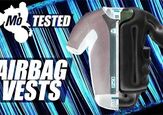

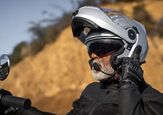













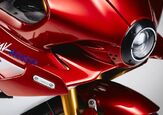
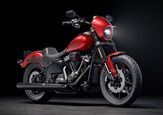
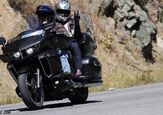

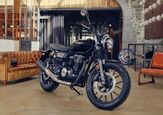
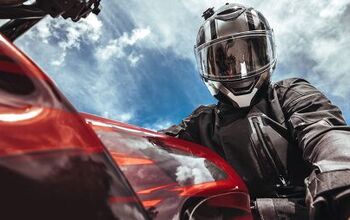
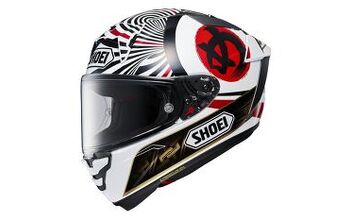







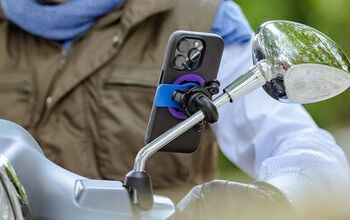

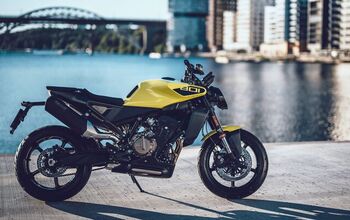

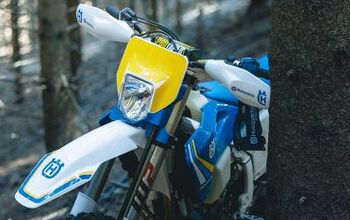
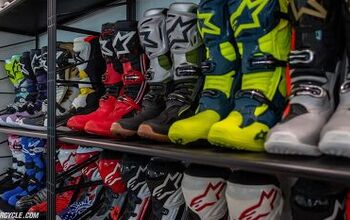

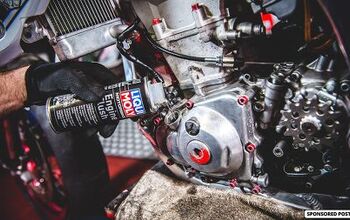

Comments
Join the conversation
I like Continentals. 2 years for each tire riding all year in Beautiful South East Asia. Good price, good grip. I check my tire pressure 2 times a week, because of the tropical heat. I also keep a good eye on the middle 3 inches of my tire for even down-the-middle wear. I also look for sidewall wear. I don't do the full down racetrack leaning so usually I keep the small sidewall hair like extra rubber for the full life of the tire.
Wouldnt it be better if a so called tyre review has an actual review of the tyres with information such as the reasons why a certain tyre is the editors choice etc?
Repeating manufacturers splurge doesn't really help people make decisions does it?